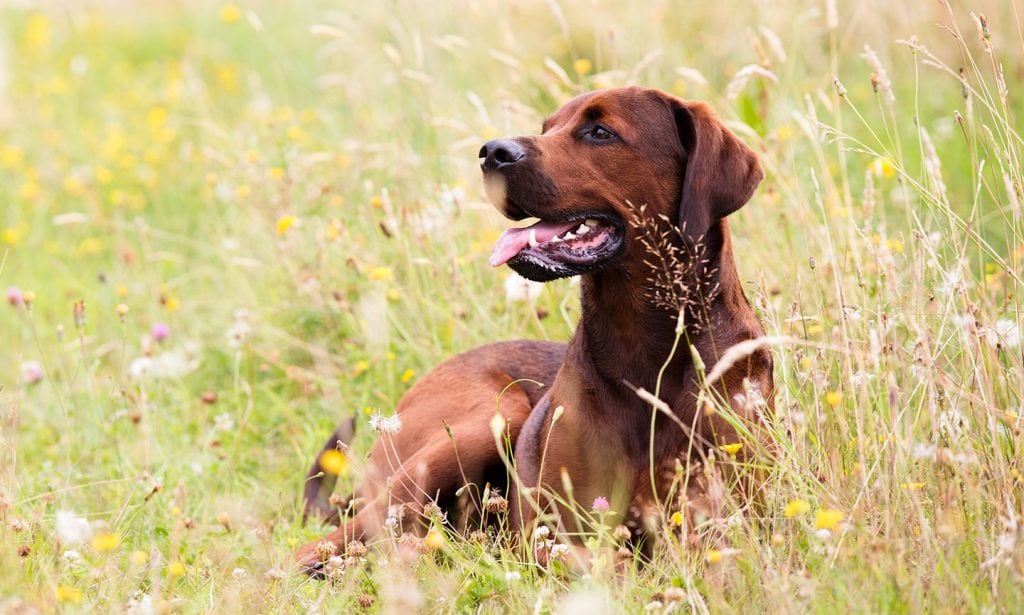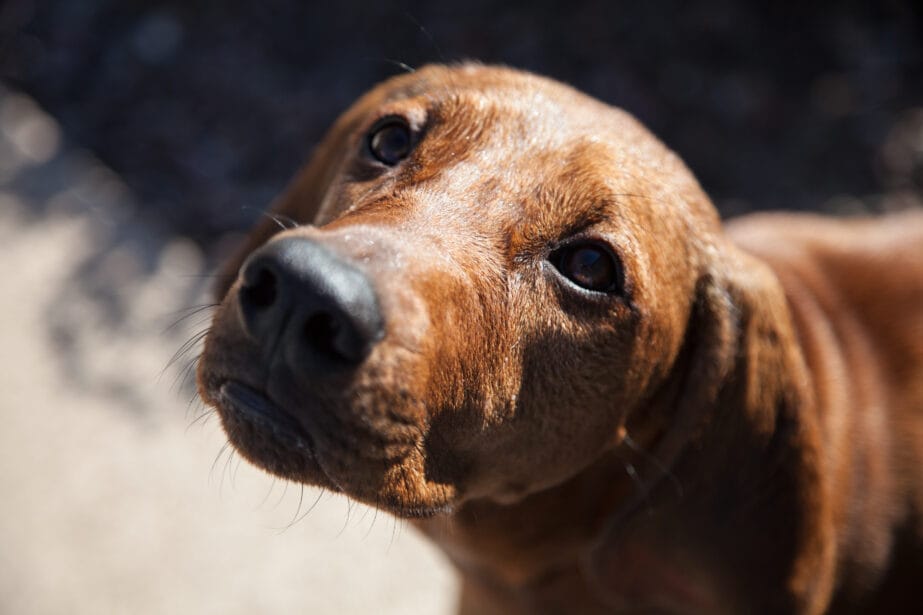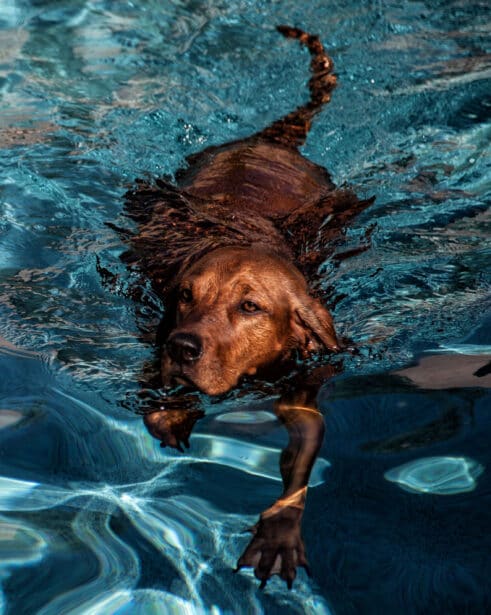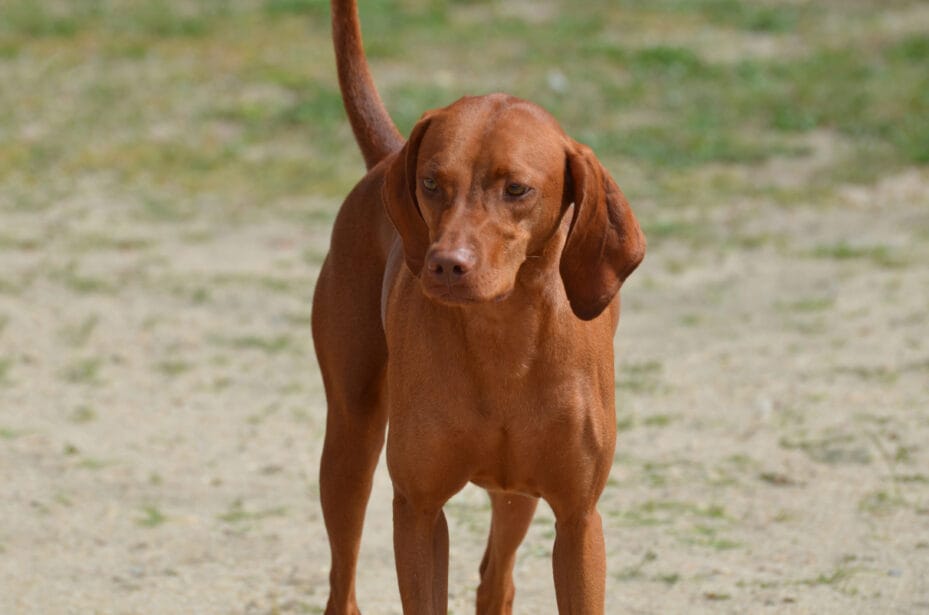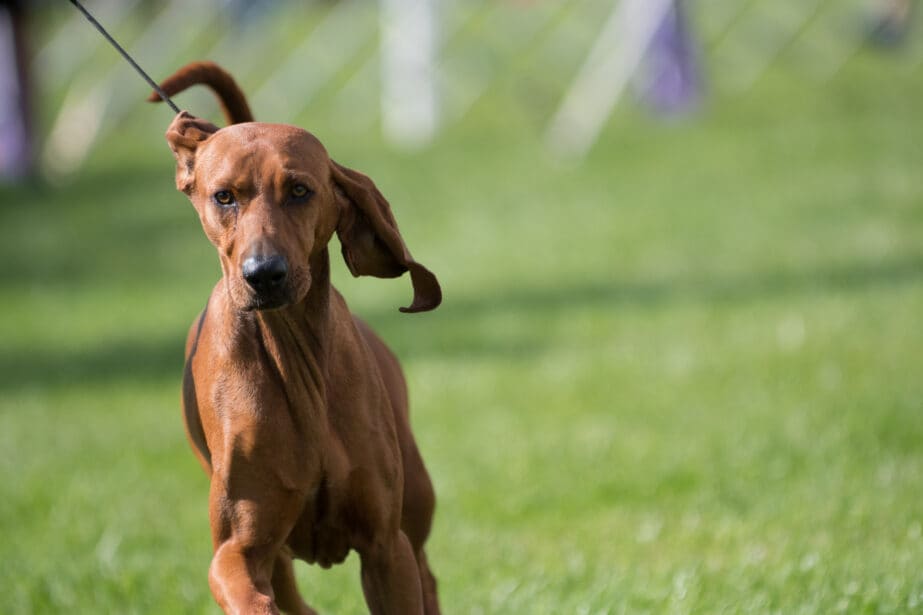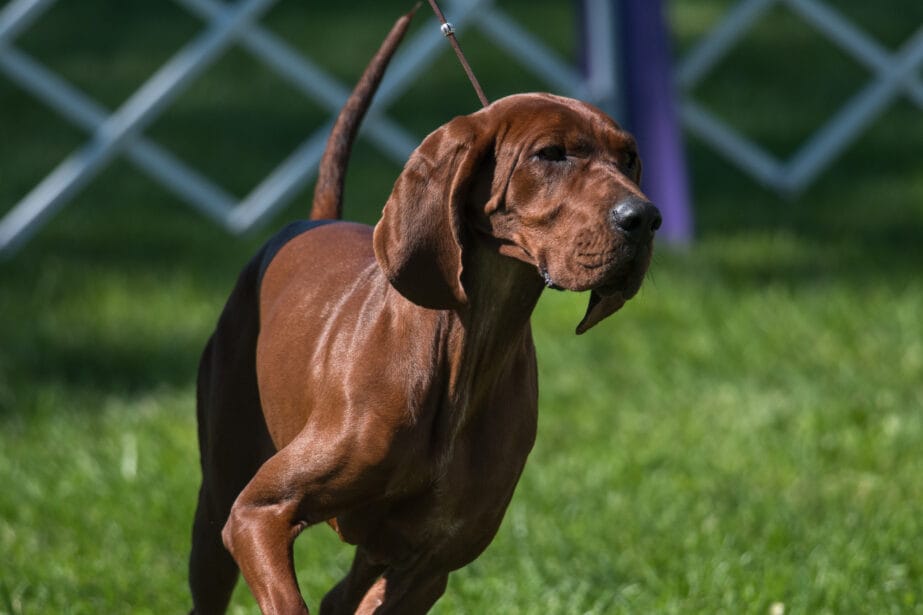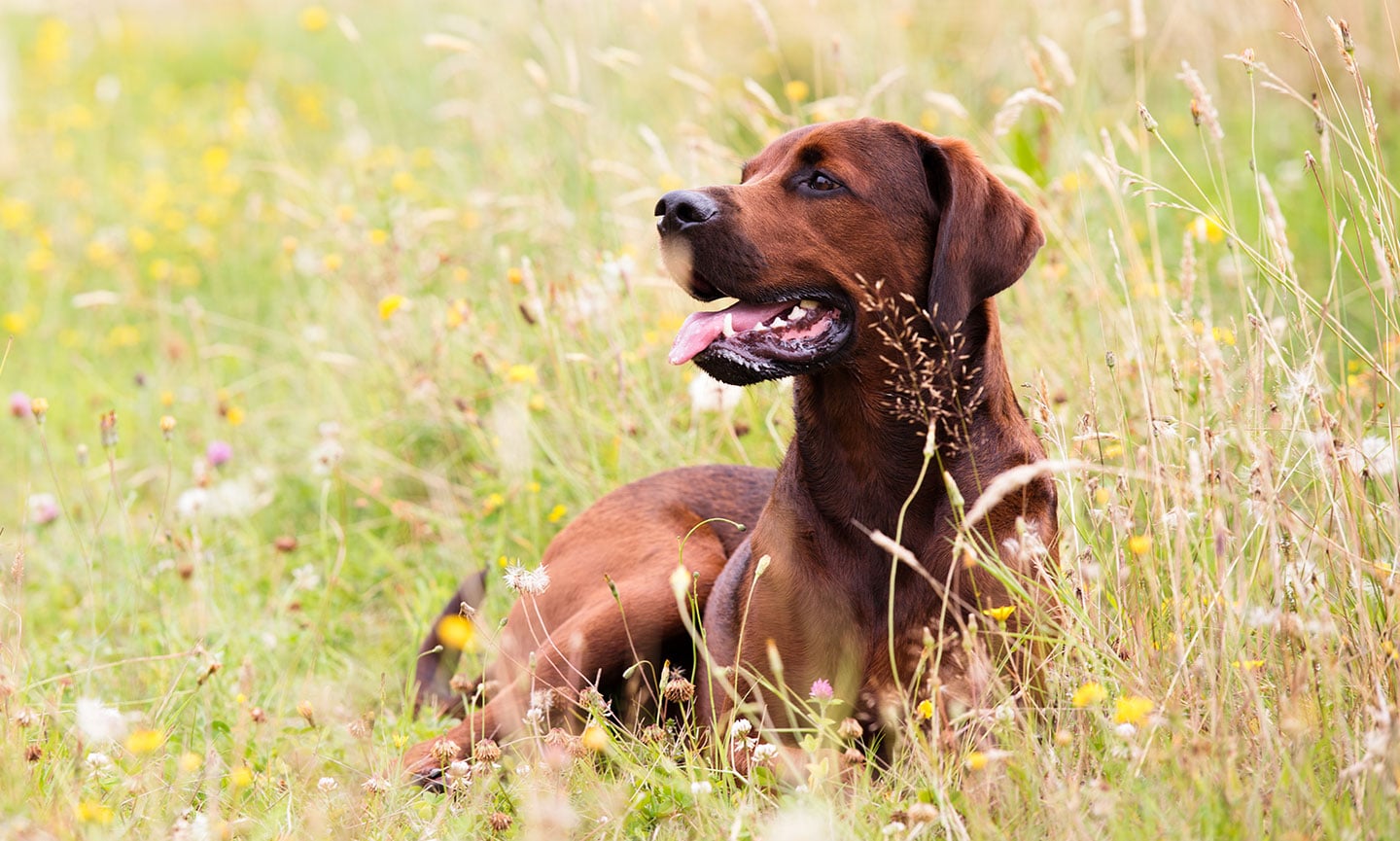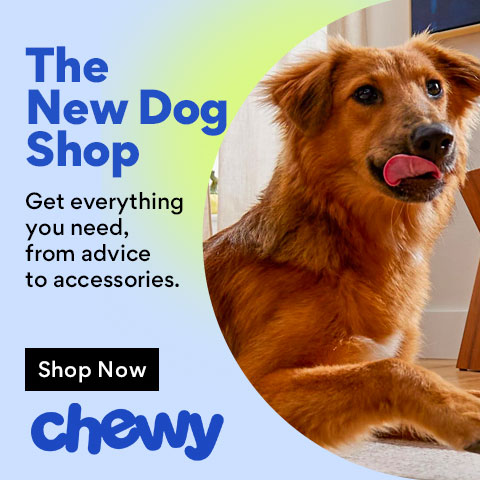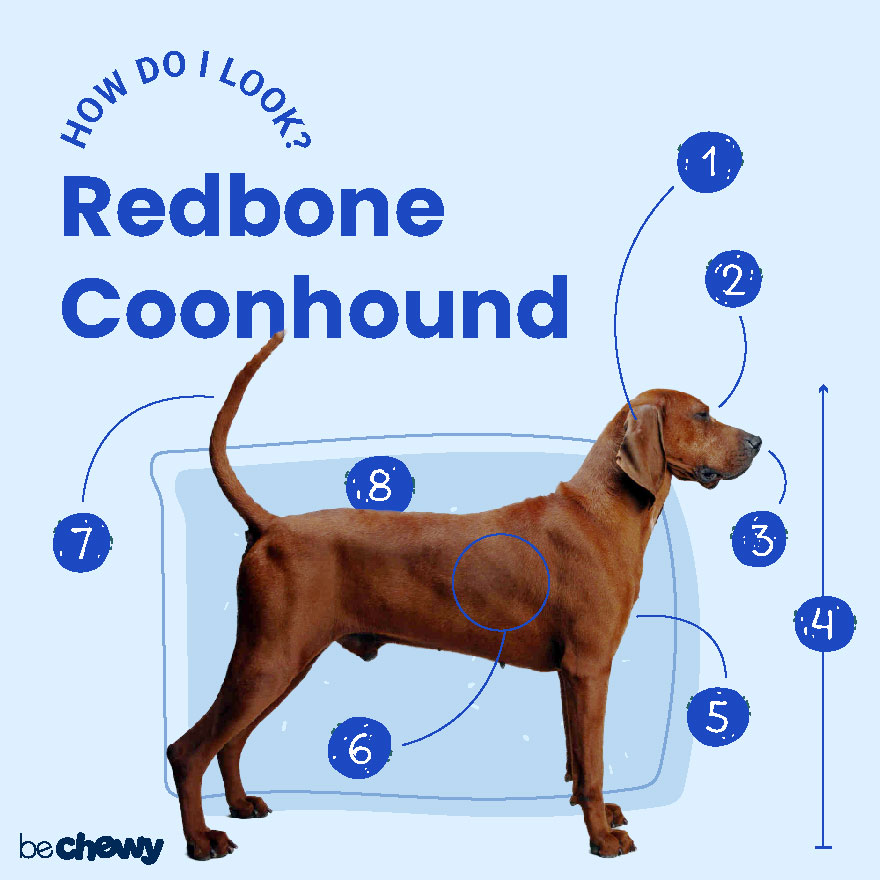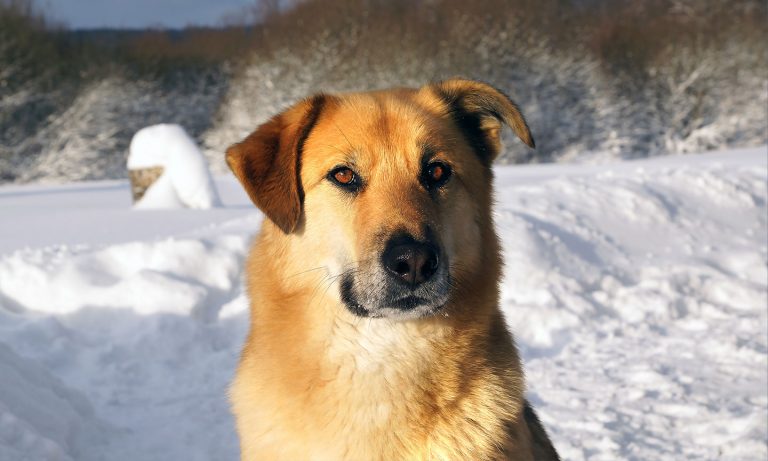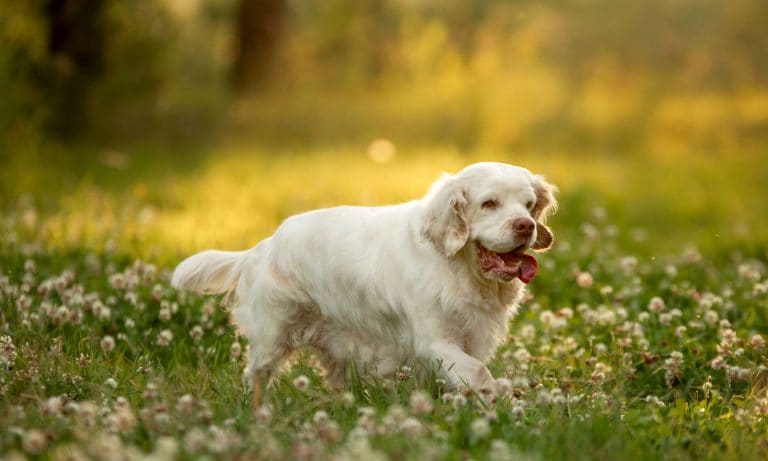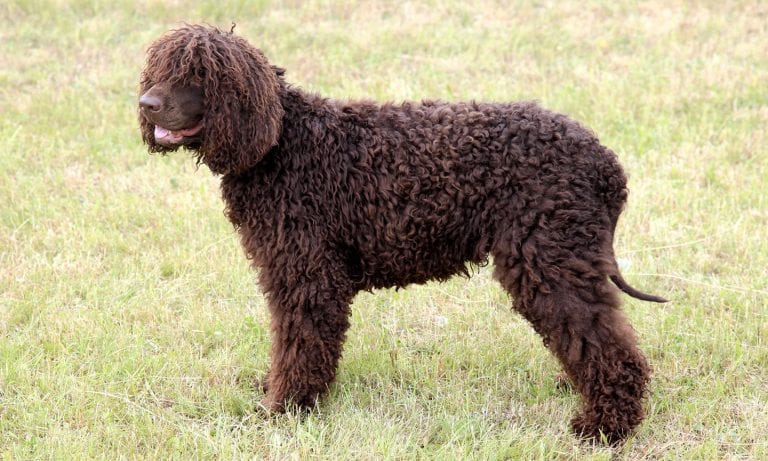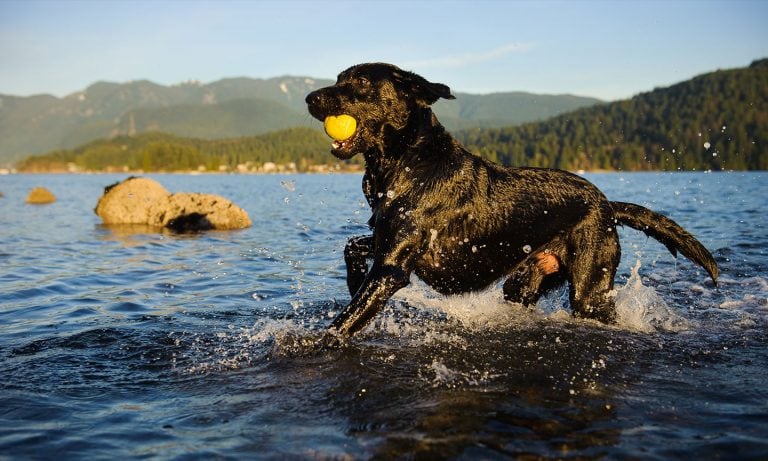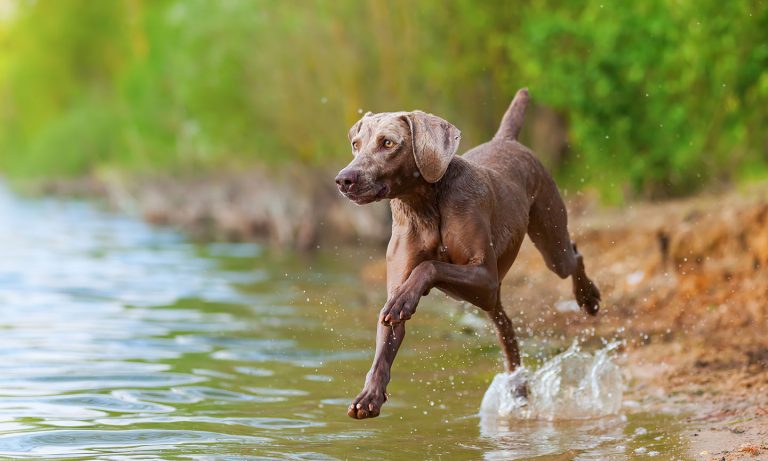The spectacularly-singular song stylings of the Redbone Coonhound (the baying! the howling!) and a “let’s be friends” invitation for everyone they meet (along with a sometimes just a bit naughty need to pursue whatever scent they catch in the air) make this handsome hound a special sort of companion. They run, they hunt, they love their peeps with unmatched devotion—they are a multi-hyphenate who is a scene-stealer when you are out and about. If you are up for the challenge of a speed-racer with a big, loud personality who is also an unapologetic oversized lap dog, and you can hang tough when faced with that famous pleading, hangdog expression, this hound can be your ideal pooch.
Breed Snapshot
Temperament:
Life Of The PartyCuriousHigh EnergyCoat Color:
Red
Best For
Redbone Coonhounds are affectionate and energetic dogs with a characteristic howl. They thrive in active homes with experienced pet parents who appreciate their hunting instincts and can provide ample outdoor space.
Redbone Coonhound Temperament
The Redbone breed is super friendly and will greet all your guests at the door—and they’re likely to lay down and roll over so their new friends can pet their belly instead of their head. Redbones love to be with their people; they may be independent thinkers and led by their nose, but they’re not loners. It’s best if you can be with them for most of the day, or arrange for a play day at doggy daycare or ask a friend to stop by. Otherwise, they may sing the sad song of their people all day (by baying) or destroy things in the house while you’re gone.
These energetic pups love to play, and they’ll be good playmates for kids, especially older ones; in their exuberance, they may accidentally knock over smaller children. So, be sure to supervise playtimes with kids and your Redbone.
These red dogs aim to please, but they have a powerful nose and can get distracted by scents. Redbones have been described as impulsive, unpredictable, independent and fast. All these traits hail from their hunting instincts; it’s important to keep your Redbone on a leash when out and about. Starting their training while they’re a puppy and ensuring they get plenty of exercise will help curb these activities. (Although you’ll never completely train these instincts out of your pup.)
Redbones can be laser-focused when they catch an interesting scent, and they’ll do whatever it takes to track it down. They’re clever escape artists who can figure out how to get over, under or around fences to get where they want to go. You might find a GPS tracker helpful in case your four-legged Houdini gets out of your backyard.
Redbone Coonhound dogs get along well with other dogs, especially those who can match their energy level, like a Border Collie. And if you raise your Redbone with a cat from puppyhood, they’ll likely get along. But their instincts will kick in around small animals that look like critters that need chasing, and they may give in to the urge.
Redbone Coonhounds aren’t aggressive, but their enthusiasm may look like aggression to people unfamiliar with the dog. They may lunge, bark, jump and dance to get what they want—for example, to chat with the Poodle across the street. But with proper training, socialization and plenty of exercise, your Redbone can be a polite member of society. Redbones are not biters, either, but it’s important to teach them not to bite while they’re puppies. As born hunters, they don’t retrieve with a gentle mouth, like a Labrador Retriever, and they may “play bite” harder than you’d like.
Redbone Coonhounds are working dogs, meaning they were bred with a job to do. These pups love being put to work! Whether that’s a formal job, like search and rescue or activities with a purpose like dog sports (i.e., tracking) or even games of hide-and-seek can help scratch their itch for work.
How to Care for a Redbone Coonhound
A Redbone Coonhound is easy to care for, but don’t neglect the basics, like brushing your pup, to keep them happy, healthy and clean. It all just gives you more time to bond with your dog over training and exercising—two things you’ll be doing a lot of.
Redbone Coonhound Health
Redbone Coonhounds have a lifespan of 12 to 15 years and are prone to fewer health conditions than other dog breeds. However, it’s important for pup parents to be aware of the health problems they may experience so you can help your pup live the happiest and longest life possible.
- Hip and Elbow Dysplasia: Hip and elbow dysplasia are caused when the joint is malformed and rubs, causing the dog pain. Symptoms include limping, reduced activity and muscle loss. Treatments range from dietary and other lifestyle changes to surgery, depending on the severity of the dysplasia.
- Panosteitis: To help prevent bone and joint problems like panosteitis, an inflammation of the bone causing pain and lameness, Redbone Coonhound puppies should be fed large-breed puppy food. Panosteitis can also be treated with medications, including anti-inflammatory drugs. Dogs should be given time to recover, with limited activity in order to help keep pain to a minimum.
- Coonhound Paralysis: Redbone Coonhounds exposed to raccoon bites or saliva may contract coonhound paralysis, an immune reaction to raccoon saliva that inflames the dog’s nerves. It can affect their gait and breathing. Take your pup to the vet immediately if you are concerned about coonhound paralysis.
- Progressive Retinal Atrophy (PRA): Progressive Retinal Atrophy (PRA) causes gradual vision loss. Night blindness can be an early symptom of the disease, which isn’t curable. However, most dogs don’t have a problem adapting to vision loss. A genetic screening test is available so be sure to ask your breeder.
Redbone Coonhound History
With a history stretching back to the red foxhounds brought by Scottish immigrants to the Southeastern United States, the Redbone Coonhound has earned their reputation as a hard-working hunting dog with incredible levels of endurance. The early ancestors of the dog were red with black saddles on their backs (a patch of color that looks like a horse saddle), but the saddle was eventually bred out, leaving the dog we see today with their solid-red coats. The breed was originally bred to hunt raccoons and foxes in Tennessee and Georgia and became very skilled at treeing raccoons. In packs, the Redbone Coonhound also hunted big game animals like bobcat and bear.
The American Kennel Club (AKC) recognized the Redbone Coonhound in 2009. While not widely popular as a pet, they are incredibly popular with hunters and farmers. With such a powerful sense of smell and tracking ability, they also excel at helping find missing people.
So, where’s the best place to find Redbone Coonhound puppies today? You can find a list of reputable breeders on the American Kennel Club’s website. What’s the average price for a puppy? Depending on the breeder, expect to spend anywhere from $800 to $1,500 for a pup. But for that, you usually get a dog who’s been screened for health and temperament issues, and they might even come with pedigree papers. You can also reach out to Redbone Coonhound rescue organizations to adopt a Redbone, keep an eye out for the breed at your local animal shelter, or search Chewy’s database of adoptable dogs in your area.
FAQs
Do Redbone Coonhounds shed?
Yes, Redbone Coonhounds shed frequently. They have double coats, and the more you brush them, the cleaner and shinier their coats will be.
Are Redbone Coonhounds good family dogs?
Redbone Coonhounds are excellent family dogs, especially for very active families with older children or teenagers. They thrive in households that include them in all the fun and have a lot of outdoor space, like big yards or farms, where they can run.
How long do Redbone Coonhounds live?
Redbone Coonhounds have a life expectancy of about 12 to 15 years, which is a long time to make many wonderful memories with your pup.
How big do Redbone Coonhounds get?
Redbone Coonhounds get big. They’re large dogs who can weigh up to 70 pounds and get up to 27 inches tall at the shoulder.
Do Redbone Coonhounds bark a lot?
Yes, Redbone Coonhounds bark a lot. They were bred to chase critters up trees and to bark loudly to keep them there. Their barking, often described as baying or howling, makes them excellent watchdogs.
What are the most common Redbone Coonhound mixes?
The most common Redbone Coonhound mixes are:
- Redbone Coonhound-Lab mix (Redgold Hound or Redbone Retriever)
- Redbone Coonhound-Beagle mix (Redbone Beagle)
- Redbone Coonhound-German Shepherd mix (Redbone Shepherd)
- Redbone Coonhound-Boxer mix (Coonhound Boxer)
- Redbone Coonhound-Pit Bull mix (Coonhound Pitbull)
- Redbone Coonhound-Poodle mix (Redbone Coonoodle)
Note: These are not purebred dogs but mixed breeds.
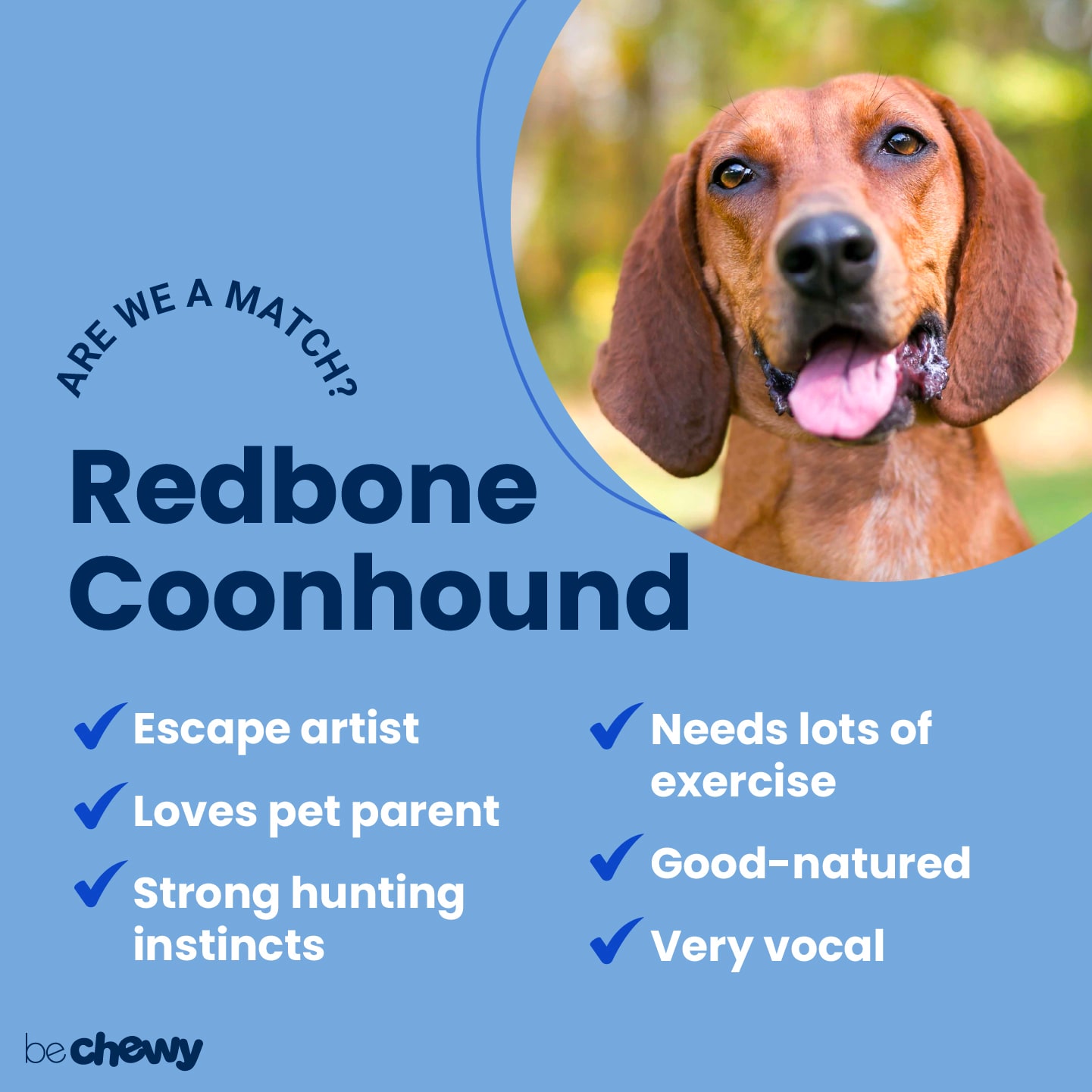
Top Takeaways
This high-energy breed needs a lot of space and time to do what they do naturally, and that is to run, chase things and bark. The Redbone Coonhound is quick, impulsive and resourceful in following their nose and getting where they want to go. But after hours of activity, they’re ready to plop down onto a nice cool, comfortable bed and relax with you. These large pups love attention and are thrilled when you have company over.
Expert input provided by certified dog trainer, Susie Aga, owner, Atlanta Dog Trainer, Ali Smith, founder, Rebarkable, and Darryl Millis, DVM, MS, DACVS, Professor of Orthopedic Surgery, Department of Small Animal Clinical Sciences, The University of Tennessee, Knoxville.
Breed characteristic ratings provided by veterinarian Dr. Sarah J. Wooten, DVM, CVJ, a veterinarian at Sheep Draw Veterinary Hospital in Greeley, Colorado; dog trainer and behavior consultant Irith Bloom, CPDT-KSA, CBCC-KA, CDBC, owner of The Sophisticated Dog, LLC, in Los Angeles; and certified animal behavior consultant Amy Shojai, CABC, in Sherman, Texas.
The health content was medically reviewed by Chewy vets.
Photo credit for “How do I look?” New York Times.

Search for Adoptable Redbone Coonhounds Near You
Top Redbone Coonhound Names
These are the top Redbone Coonhound names as chosen by Chewy's pet parents!
Female Names
- Ruby
- Daisy
- Rosie
- Sadie
- Dixie
- Penny
- Lady
- Remi
- Jolene
- Ginger
Male Names
- Copper
- Red
- Cooper
- Bo
- Duke
- Jack
- Boone
- Beau
- Ruger
- Gunner
Share:
